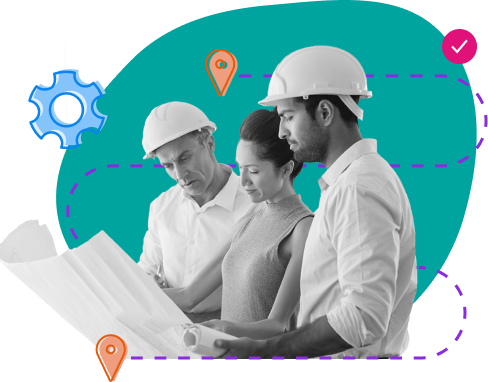How Bots Save Time for Enterprise Employees and Managers
Bots are computer programs that can benefit an enterprise business by offering employees assistance with a wide variety of repetitive operations. They can speed up the process for a wide range of tasks, from completing purchasing paperwork to locating information about the company.
Managers can aid employees by identifying the information and tasks with which employees need assistance. They can then work with IT to create new bots or add on to existing bots to help employees work more efficiently.
Chatbots Can Help Salespeople and Managers
Say a salesperson wants to pull up all relevant information about a customer. Doing so requires him to open several programs at once. These programs include a spreadsheet containing a record of the customer's past orders, a phone and email directory containing the customer's contact information and a web browser with the latest version of the customer's website. With a corporate chatbot, the salesperson can speak to the bot or type a text message to retrieve and display all of the data. This eliminates an unnecessary search to get the salesperson on the phone.
A chatbot can also assist a manager during meetings. When a manager indicates she is going to speak about a certain customer, a responsive chatbot that is "listening" to her talk can display information stored on different platforms about the customer. The manager can then look at her monitor or screen to note characteristics of the customer or recent problems. This makes the manager's talk current and informative
There are two main types of chatbots. "Pull" bots provide you information when you request it. "Push" bots prompt you to engage in an action. Consider which tasks require motivation, such as checking news updates for an organization, and which should be initiated by employees who need information.
One of the best times to utilize chatbots is during the onboarding process. During onboarding, new employees may feel more comfortable asking a bot for critical information rather than distracting their coworkers from their duties.
A chatbot collecting information requests from new employees can show what topics are popular, what information new employees have trouble remembering and where new employees have hit stumbling blocks. HR can then utilize the data from the chatbots and compare it with data from more seasoned employees. This will help HR evaluate how long it takes an employee to integrate and feel comfortable in their new workplace.
Facilities & Status Bots Help Operations Run Better
If you're a business with a considerable amount of machines and buildings to manage, you can use a status bot to monitor the temperature, efficiency, accuracy and levels of necessary solutions for your equipment and structures. You can pair this bot with a facilities bot that makes changes via the Internet of Things (IoT) to optimize production and safety.
If things are askew, you can pair drastic changes with another status bot that asks for feedback through a messaging app from all team members. They can provide you with real-world, real-time information on the consequences of problems so you can engage in damage control.
HR, Purchasing and Calendaring Bots Can Speed Up Mundane Tasks
Think about working with your internal departments to create company-specific bots or adopt a digital assistant allowing employees to complete difficult tasks more quickly and accurately.
One example of such a bot is Wanda, a digital assistant that completes or alters basic paperwork, like timesheets. What if a process requires several steps (for example, a leave request must be run by a manager and HR)? You can program a digital assistant to engage in multiple tasks or bots to work with one another to move the process along quickly. For example, an employee's submission of a leave request could be programmed to trigger a calendar invitation for a meeting with the manager and HR.
The A.I. Behind Different Bots
The same technology and coding behind intuitive bots for consumers has come or is coming to enterprise business for internal use.
Bots have the ability to remember past requests and conversations. They can also provide contextual information relating to current requests. For example, say a manager is traveling to the U.K. for a business meeting. The bot the manager uses to plan the trip will have remembered his previous similar trips abroad. The bot can remind him to select if he wants alerts about flight delays between connections and traffic to his destination following the flight.
Bots Can Be Used for Motivation
Managers often want employees to reach company goals, but lack a unified way of notifying employees about progress. One way to show performance is to use linked bots to encourage employee engagement. In one case study, a company used a light bulb connected to the IoT to reveal whether a desired number of employees were logging into the company's API. If the number was not reached, the light bulb glowed red. The signal reminded employees to increase login numbers.
In another study, employees linked the company's success to the amount of light in an in-house garden. The employees wanted the garden to thrive and worked hard to make sure it was healthy. Researchers are now exploring altering a wide range of factors. Some of these factors include light, sound, temperature, speech, and environmental changes.
At first, understanding which bots work for your company may be overwhelming. Start small, such as with a digital assistant. Next, determine what tasks need automation or linking. Later, you can think of building an overarching structure to help your employees do their best and focus on the tasks requiring a human touch. If you need help understanding how to do this, RevUnit can help.











